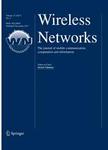版权所有:内蒙古大学图书馆 技术提供:维普资讯• 智图
内蒙古自治区呼和浩特市赛罕区大学西街235号 邮编: 010021

作者机构:Yonsei Univ Dept Comp Sci Seoul 120749 South Korea
出 版 物:《WIRELESS NETWORKS》 (无线网络)
年 卷 期:2014年第20卷第4期
页 面:733-745页
核心收录:
学科分类:0810[工学-信息与通信工程] 0808[工学-电气工程] 0809[工学-电子科学与技术(可授工学、理学学位)] 08[工学] 0812[工学-计算机科学与技术(可授工学、理学学位)]
基 金:National Research Foundation of Korea (NRF) Ministry of Education, Science and Technology [2013R1A1A2011114]
主 题:Replica allocation Opportunistic network Data accessibility Communication cost Distributed scheme Estimated access frequency
摘 要:An opportunistic network (OPPNET) consists of diverse mobile nodes with various mobility patterns. Numerous mobility patterns and the resource constraints of mobile nodes lead to network partitioning that result in system performance degradation including low data accessibility. In a traditional mobile ad hoc network (MANET) which is similar to an OPPNET, replica allocation schemes have been proposed to increase data accessibility. Although the schemes are efficient in a MANET, they may not be directly applicable to an OPPNET because the schemes are based on a grouping of mobile nodes. It is very difficult to build groups based on network topology in an OPPNET because a node in an OPPNET does not keep its network topology information. In this paper, we propose a novel replica allocation scheme for an opportunistic network called the Snooping-based Fully Distributed replica allocation scheme. The proposed scheme allocates replicas in a fully distributed manner without grouping to reduce the communication cost, and fetches allocated replicas utilizing a novel candidate list concept to achieve high data accessibility. In the proposed scheme, a node can fetch replicas opportunistically based on the candidate list. Consequently, the proposed replica allocation scheme achieves high data accessibility while reducing the communication cost significantly. Extensive simulation results demonstrate that the proposed scheme reduces the communication cost and improves data accessibility over traditional schemes.